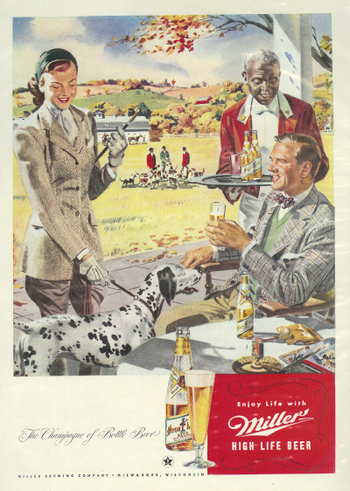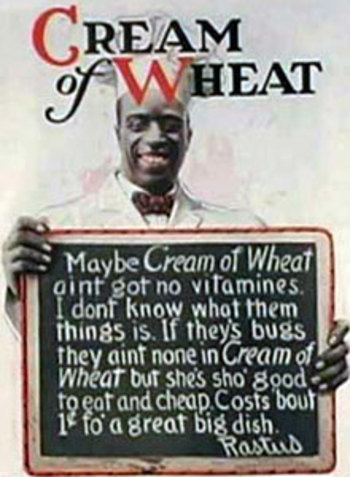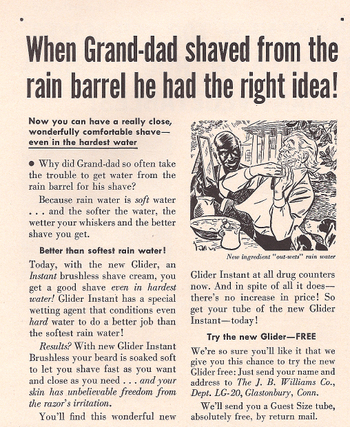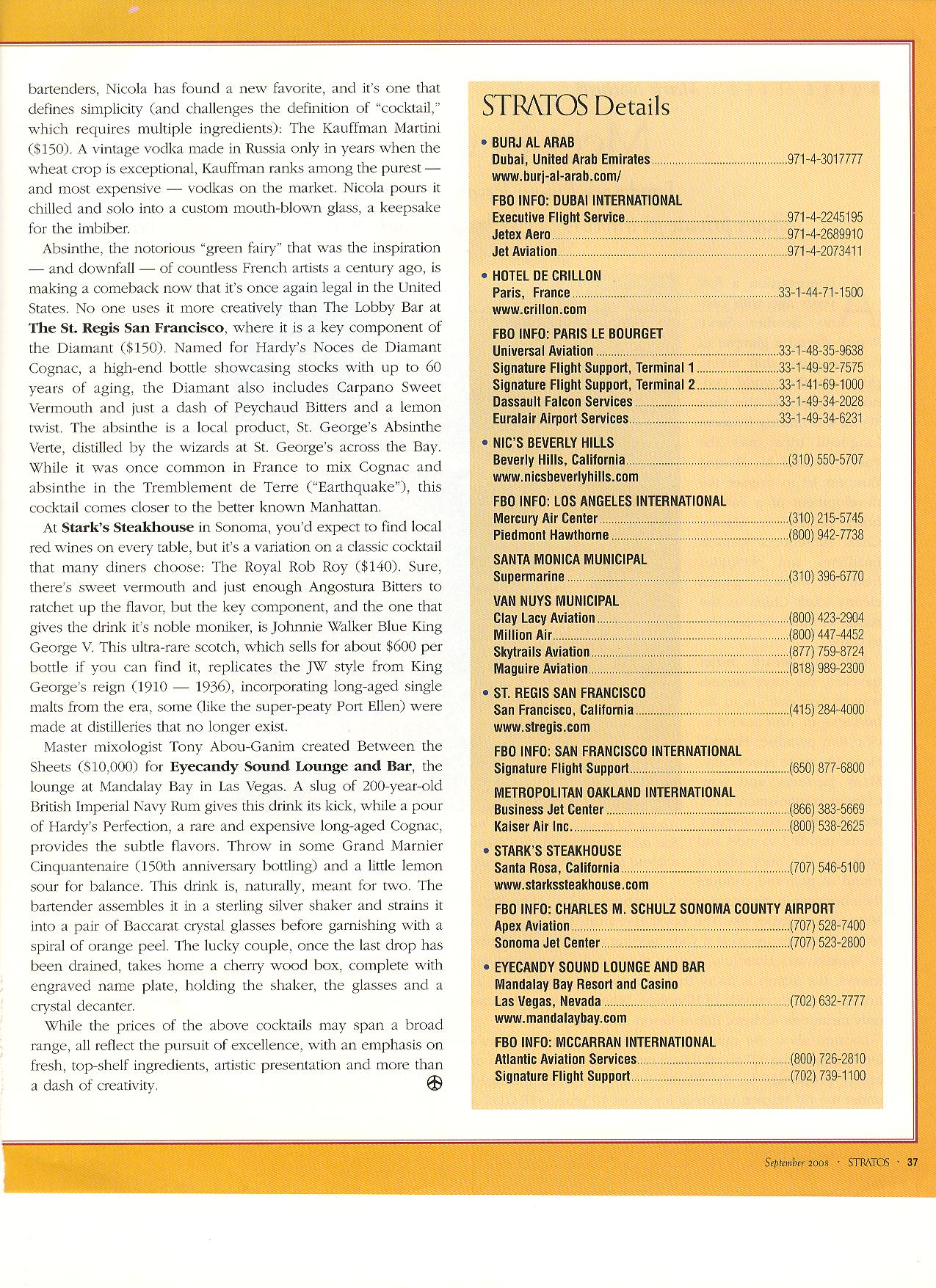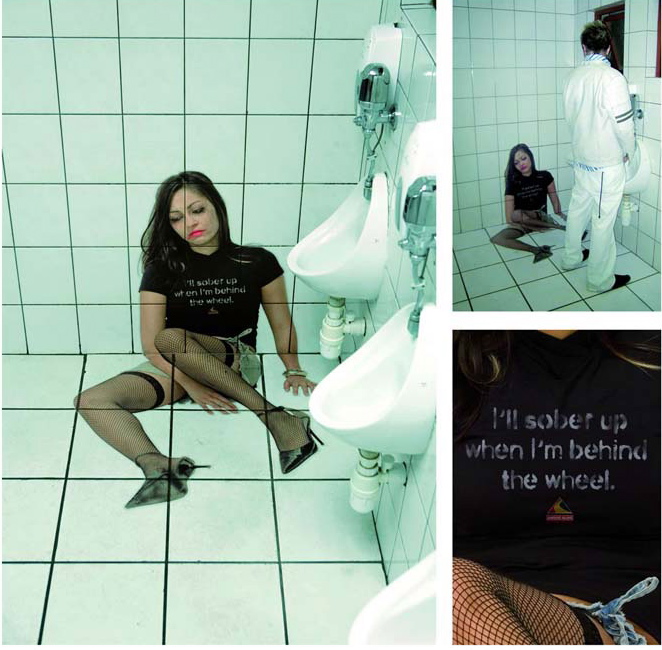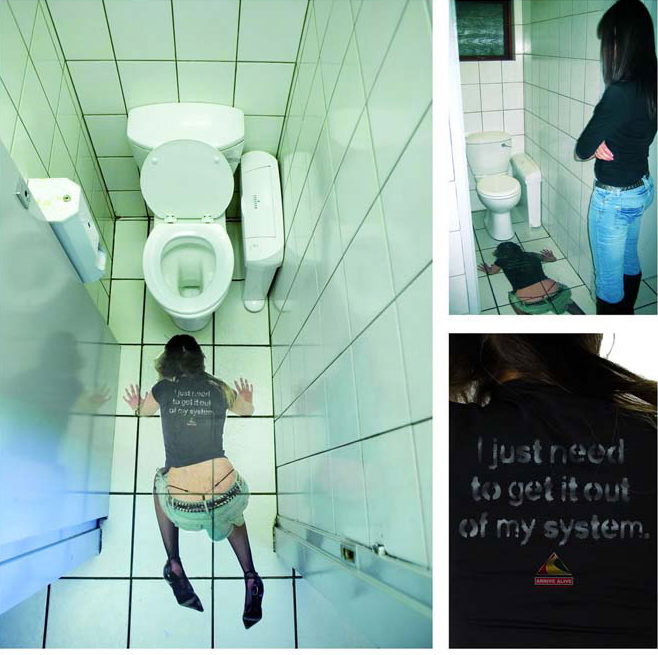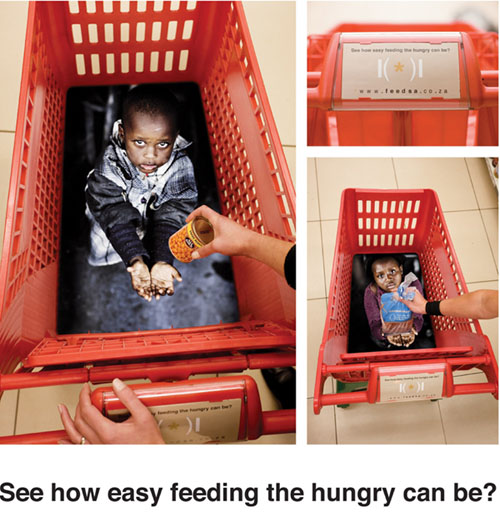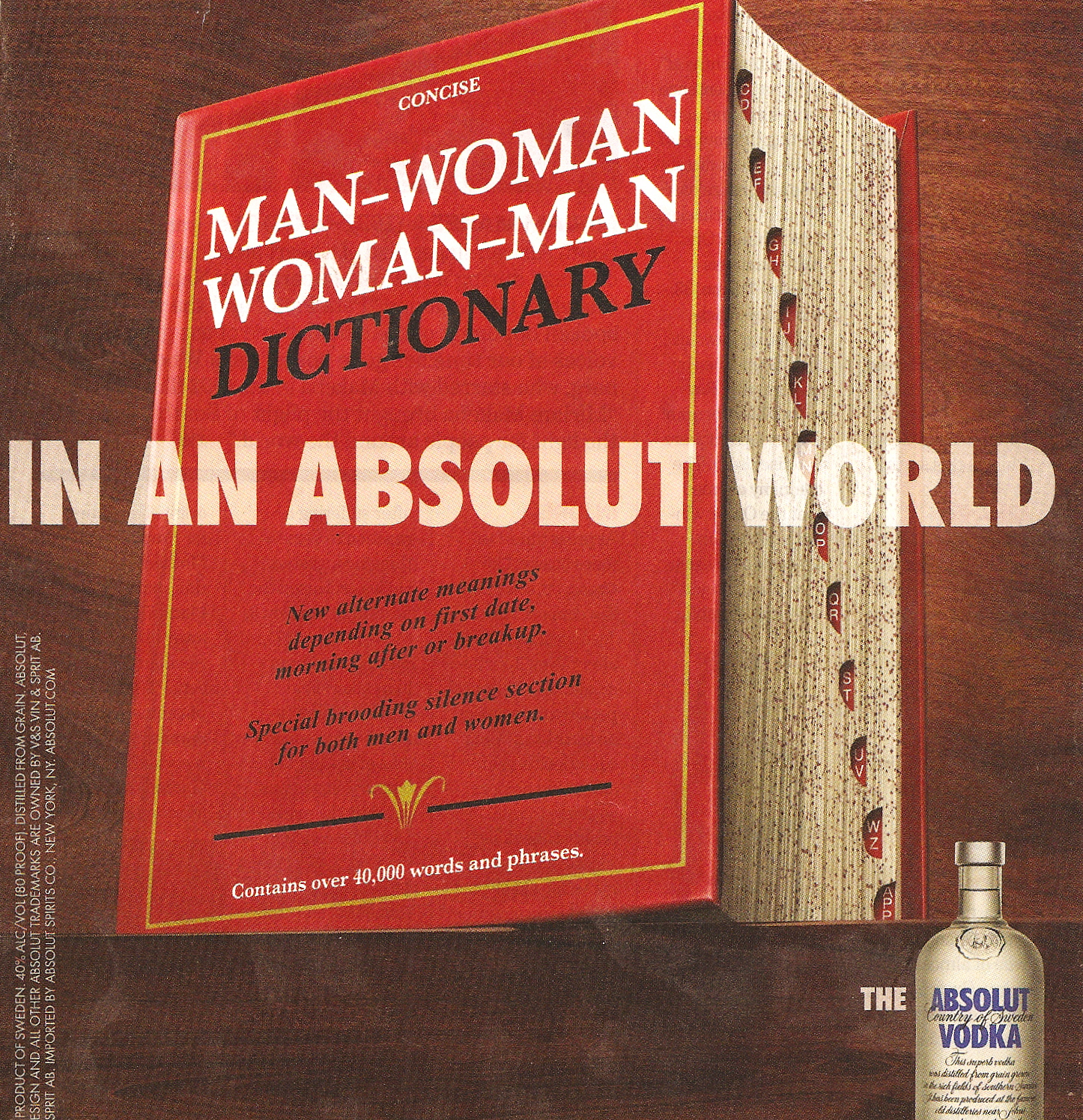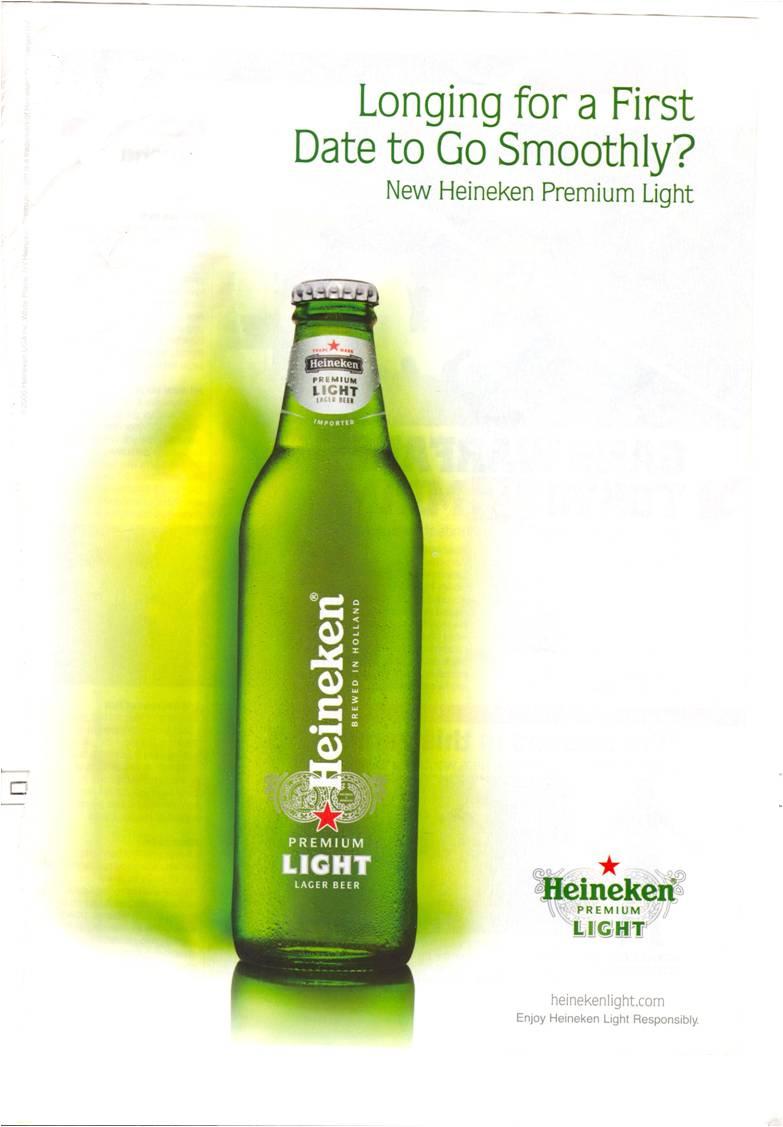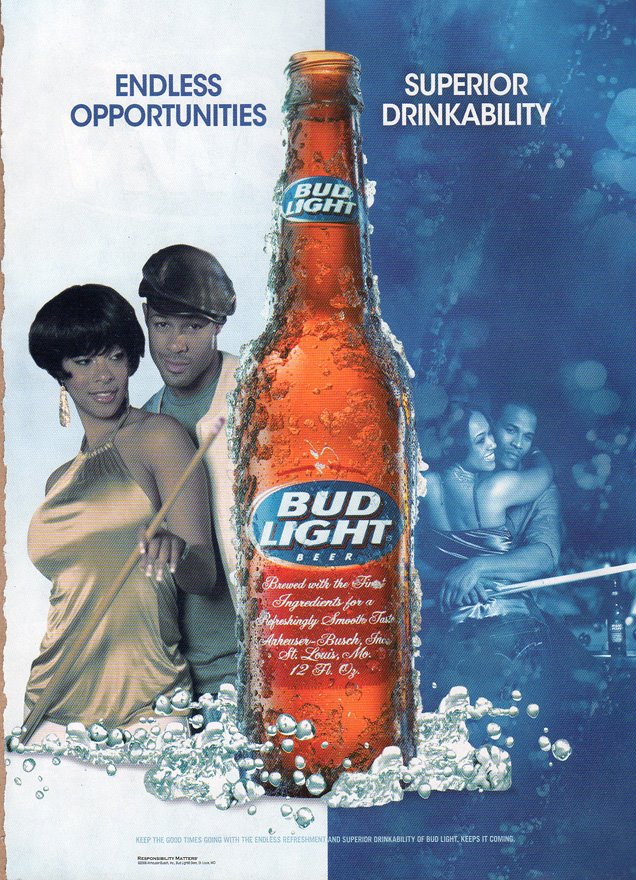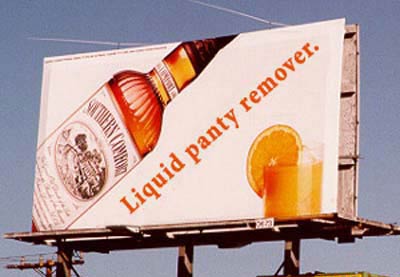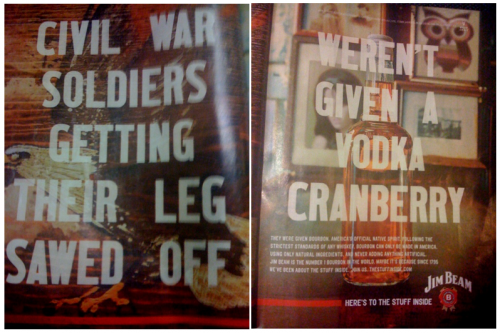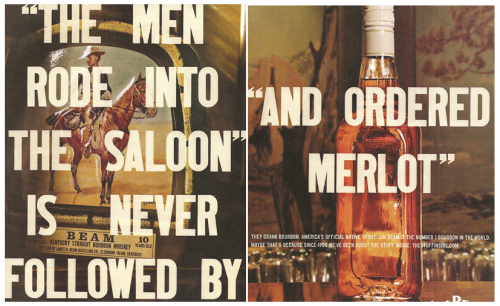Ben O. brought our attention to this set of vintage ads (from Found in Mom’s Basement) that all use images of Black male servants.
This one for Cream of Kentucky bourbon was illustrated by Norman Rockwell. I can’t quite figure out what the expression on the Black servant’s face is supposed to convey:
Part of the text reads, “Why did Grand-dad so often take the trouble to get water from the rain barrel for his shave?” For some reason I have a feeling it wasn’t Grand-dad getting the water.
Thanks, Ben O.!


